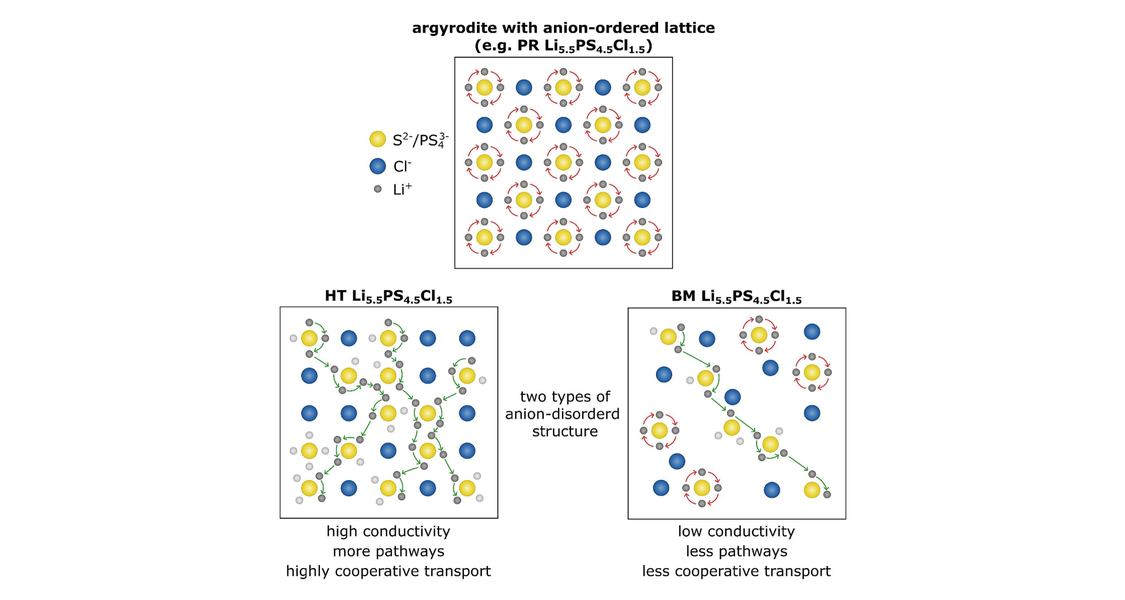23.05.2025 Paper: Effects of disorder on the energy landscape and motional mechanisms involved in lithium ion dynamics and transport in solid electrolytes: Li5.5PS4.5Cl1.5 argyrodite as a case study

Mohammad Ali Badragheh(a), Vanessa Miß(b), Bernhard Roling(b), Michael Vogel(a)
(a) Institute for Condensed Matter Physics, Technische Universität Darmstadt, 64289 Darmstadt, Germany
(b) Department of Chemistry, Philipps-Universität Marburg, 35032 Marburg, Germany
Abstract
7Li NMR diffusometry and relaxometry are combined with electrochemical impedance spectroscopy to compare the mechanisms for the dynamics and transport of lithium ions in disordered and crystalline electrolytes with argyrodite composition Li5.5PS4.5Cl1.5. The dc conductivity of a disordered sample prepared by ball milling amounts to 0.76 mScm−1 at room temperature, which is substantially lower than that of two previously studied crystalline argyrodites differing in the order of the anion sublattice due to various heat treatments. However, the activation energy of the dc conductivity is smaller for ball-milled disordered Li5.5PS4.5Cl1.5 (0.35 eV) than for both crystalline compounds (0.38 eV). 7Li NMR field-gradient measurements of the self-diffusion coefficient and its activation energy confirm these findings and, furthermore, reveal different Haven ratios. 7Li NMR field-cycling relaxometry shows that the lithium ion jumps in ball-milled Li5.5PS4.5Cl1.5 are described by very broad dynamical susceptibilities arising from a temperature-independent Gaussian-like distribution of activation energies with a mean value of 0.43 eV, while the susceptibilities indicated a high-energy cutoff for the crystalline electrolytes. Based on different relations between the activation energies for the conductivity, diffusivity and jumps, we discuss that the shape and exploration of the energy landscapes of ball-milled and crystalline Li5.5PS4.5Cl1.5 samples strongly differ. Moreover, significant differences in the preexponential factor of the dc conductivity, the Haven ratio and the single-particle correlation factor point to distinct types of anion lattice disorder of the ball-milled disordered and heat-treated crystalline samples.
Read the full paper in Solid State Ionics 2025, 427, 116903 published by Elsevier.